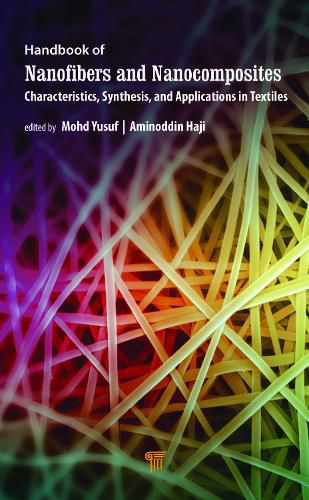Readings Newsletter
Become a Readings Member to make your shopping experience even easier.
Sign in or sign up for free!
You’re not far away from qualifying for FREE standard shipping within Australia
You’ve qualified for FREE standard shipping within Australia
The cart is loading…






Textiles with functional properties such as antimicrobial finishes, drug delivery, ultraviolet resistance, electrical conductivity, superhydrophilicity, superhydrophobicity, self-cleaning, EMI shielding, flame-retardance can be developed with the help of nanotechnology. Nanomaterials can be added to the textile materials at different stages of the production process, including spinning, finishing, and coating. Nanofibers are textile fibers that show enhanced properties due to larger surface area compared with ordinary textile fibers. They have diameters less than 1000 nm and can hold nanoparticles, drugs, extracts, essential oils, etc. in their polymeric matrix. They actually encapsulate these compounds and are able to control their release by delivering them only at the targeted sites. Recently, nanofibers and textile nanocomposites have attracted great interest in the industry and research, and electrospinning is the most famous among the several methods that have been developed for the fabrication of nanofibers. This book is a collection of the reviews on the recent advances in the fields of nanofibers, nanocomposites, and their applications in textiles as well as related fields.
$9.00 standard shipping within Australia
FREE standard shipping within Australia for orders over $100.00
Express & International shipping calculated at checkout
Textiles with functional properties such as antimicrobial finishes, drug delivery, ultraviolet resistance, electrical conductivity, superhydrophilicity, superhydrophobicity, self-cleaning, EMI shielding, flame-retardance can be developed with the help of nanotechnology. Nanomaterials can be added to the textile materials at different stages of the production process, including spinning, finishing, and coating. Nanofibers are textile fibers that show enhanced properties due to larger surface area compared with ordinary textile fibers. They have diameters less than 1000 nm and can hold nanoparticles, drugs, extracts, essential oils, etc. in their polymeric matrix. They actually encapsulate these compounds and are able to control their release by delivering them only at the targeted sites. Recently, nanofibers and textile nanocomposites have attracted great interest in the industry and research, and electrospinning is the most famous among the several methods that have been developed for the fabrication of nanofibers. This book is a collection of the reviews on the recent advances in the fields of nanofibers, nanocomposites, and their applications in textiles as well as related fields.